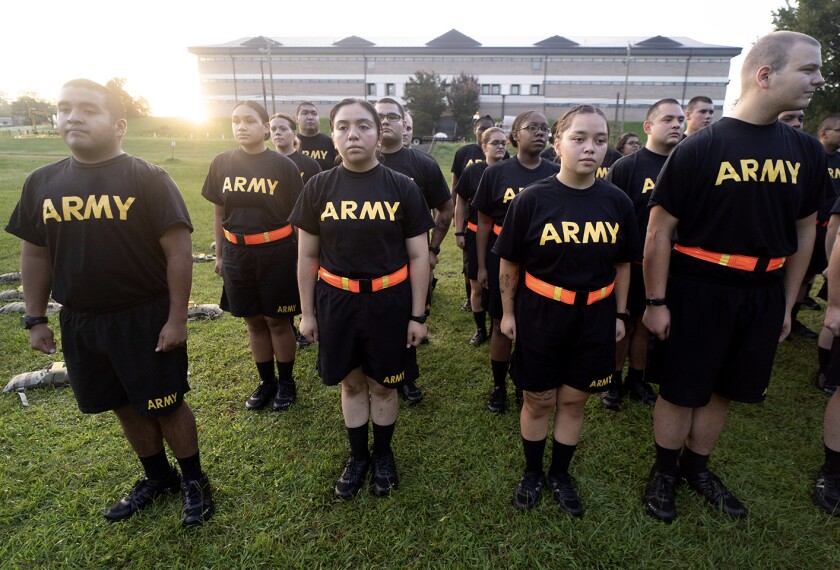Pedro Noguera, the dean of the University of Southern California’s Rossier School of Education, and I have a podcast (Common Ground: Conversations on Schooling) in which we dig into our disagreements and seek to identify common ground on some of the thorniest questions in education. I thought readers might enjoy perusing snippets of those conversations every now and then. Recently, Pedro and I had a conversation about Biden’s loan-forgiveness plan (currently paused due to a court challenge) as well as the cost and value of higher education.
—Rick
Pedro: So, my first reaction to the plan was that it’s not going to do much. The college-loan debt of so many younger Americans is so high that 10K is more of a symbolic gesture. But then, I’ve been talking to people who are dealing with these loans, and they all said, “It’s a help … a step in the right direction.” So, I have mixed feelings. I think the loan relief doesn’t address the bigger problem—the cost of college, which is rising every year. That’s something we’ve got to deal with, and this plan doesn’t address that. This is a very temporary measure to help the people who are burdened with college loans now. What about the people who have to take out loans next year? And the year after that?
Rick: My feelings aren’t too mixed. I think it’s wrongheaded. First, I totally agree with you on the cost of college question. What’s especially frustrating to me is that this sends the signal to future borrowers that they might as well borrow money, because it might be free down the line. You’re right that $10,000 for folks who might owe substantial amounts isn’t a huge amount to them, but the total price tag for this thing is nearly half a trillion dollars to American taxpayers—including our kids and grandkids, who didn’t borrow any of this money. That’s more than twice of all the COVID-relief money provided to K-12 education. It’d be enough to double the size of the Pell Grant for decades. And instead, it’s being given willy-nilly to pretty much anybody who borrowed money. I regard any government lending program as a handshake between the borrower and the taxpayer. If people borrowed money and are unemployed, having a rough time, or they didn’t get their degree, well, I understand the case for targeted relief to those in these particular circumstances. But using a provision of the Post-9/11 HEROES Act, targeted at military families, to give hundreds of billions to people who’ve borrowed money for law school or what-have-you—it doesn’t strike me as responsible or constructive.
Pedro: I want to put it into perspective. We give all kinds of relief to homeowners and tax breaks to business owners. If you think about it as far as who benefits from government subsidies of various kinds, lots of people do. There is not a lot of complaining when we have some of the biggest corporations in the country not paying their share of taxes. At the same time, what most concerns me is that it gives the appearance that we’re solving the problem, and we’re not. The issue we have to tackle is why states have stopped subsidizing their public colleges. If public colleges were cheaper, it might force some of the private colleges to lower their tuition. When I went to college at Brown, it was about $7,000 a year. I ended up with about $5,000 in debt at the end of four years because I had Pell Grants and scholarships that covered it. I still thought that was a lot of money. Right now, the cost of an education at Brown is close to $80,000 a year. And it’s hard to say whether you’re getting something more, or better, now than when I was a student.
Rick: I hear you. It’s a reasonable point. But we already have policies and laws that provide subsidies for college borrowing. There’s the Pell Grant. There’s Public Service Loan Forgiveness and income-driven repayment options. Direct lending is already provided at a better-than-market rate, since it’s provided by the government. And then there’s public funding for public institutions, work-study, and so forth. So I’d argue that college-goers and colleges are already receiving a whole lot of public support. And I’m especially troubled by the notion that taxpayers should give these students money so that Harvard or Stanford can squat on its endowment—that seems just morally perverse. It seems to me, one policy response here is for those deep-pocketed institutions that have an endowment of a certain size to take some of this off the taxpayers. Washington should make clear that if endowed institutions wish to continue to be eligible for federal student-lending, research funds, or other aid, they ought to have to work out a deal with the government where they have to repay taxpayers the money used for their former students as a condition for continued eligibility. Think of it as a version of what General Motors had to do when taxpayers bailed out GM in 2009, under the Obama administration. That kind of arrangement would, at least, draw a distinction when it comes to these extremely resource-rich institutions which could have used their endowments to reduce student borrowing—and instead have chosen to hoard them.
Pedro: I like that. The average amount of debt owed by a college graduate is $28,000, so $10,000 represents a significant amount, which means that many of those people will be able to buy homes, cars, and other things that will help them and the economy. So, if you think about debt relief that way, it will be a real benefit, even to people who don’t qualify. But if the cost of colleges keeps going up, it might result in a lot of people saying college is not worth it, and that’s not good for this country. We need an educated population.
Rick: You noted that rising tuition costs, in some cases, can be partially attributed to reductions in state aid. But let’s set that aside for the moment. That’s obviously not a factor when it comes to private institutions like Stanford, Oberlin, or Yale. What do you think is driving the huge growth in college costs at these places?
Pedro: You know the cost of operations. Including the salaries of professors. There are certain academic fields where professors have been able to demand very high salaries, particularly in economics, business, law, and medicine. At the same time, parents want their kids in nice dorms, they want them to have the luxuries of middle-class life while they’re in college, and so they expect that if they pay high tuition, then the school will meet their needs or desires.
Rick: When the government winds up being asked to step in and bail out a sector, we usually say, “Well, let’s make sure the crazy behavior doesn’t continue.” That was certainly the case with GM or the housing mortgage lenders in 2009. So, it seems to me, we ought to say to the colleges, “If you want to be eligible for the feds to help underwrite student tuition, you’ve got to keep tuition under control. We are not just going to keep writing checks so that 19-year-olds can dig themselves into debt without realizing what they’re getting into.” At the end of the day, by simply mailing money to grown-ups who chose to borrow this money for a B.A. or to attend grad school, are we teaching the wrong lesson? Are we teaching people that if you complain long enough and loud enough, that someone will give you stuff?
Pedro: I don’t think that’s true. You can make the comparison to health care, where people often end up with lots of debt and even go bankrupt. As you know, I was sick a year ago, and when I saw the cost of some of the procedures, it was outrageous. Who’s paying that? The health insurance company. It’s out of hand, and I don’t know what we do to contain the cost of higher ed. or of health care. But that’s a big part of what’s distorted in this whole economy. We need to figure it out because we need health care and we need education. Our society benefits from having well-educated people, but we’ve got to figure out how to do it efficiently, like Canada.
This interview has been edited and condensed for clarity.






